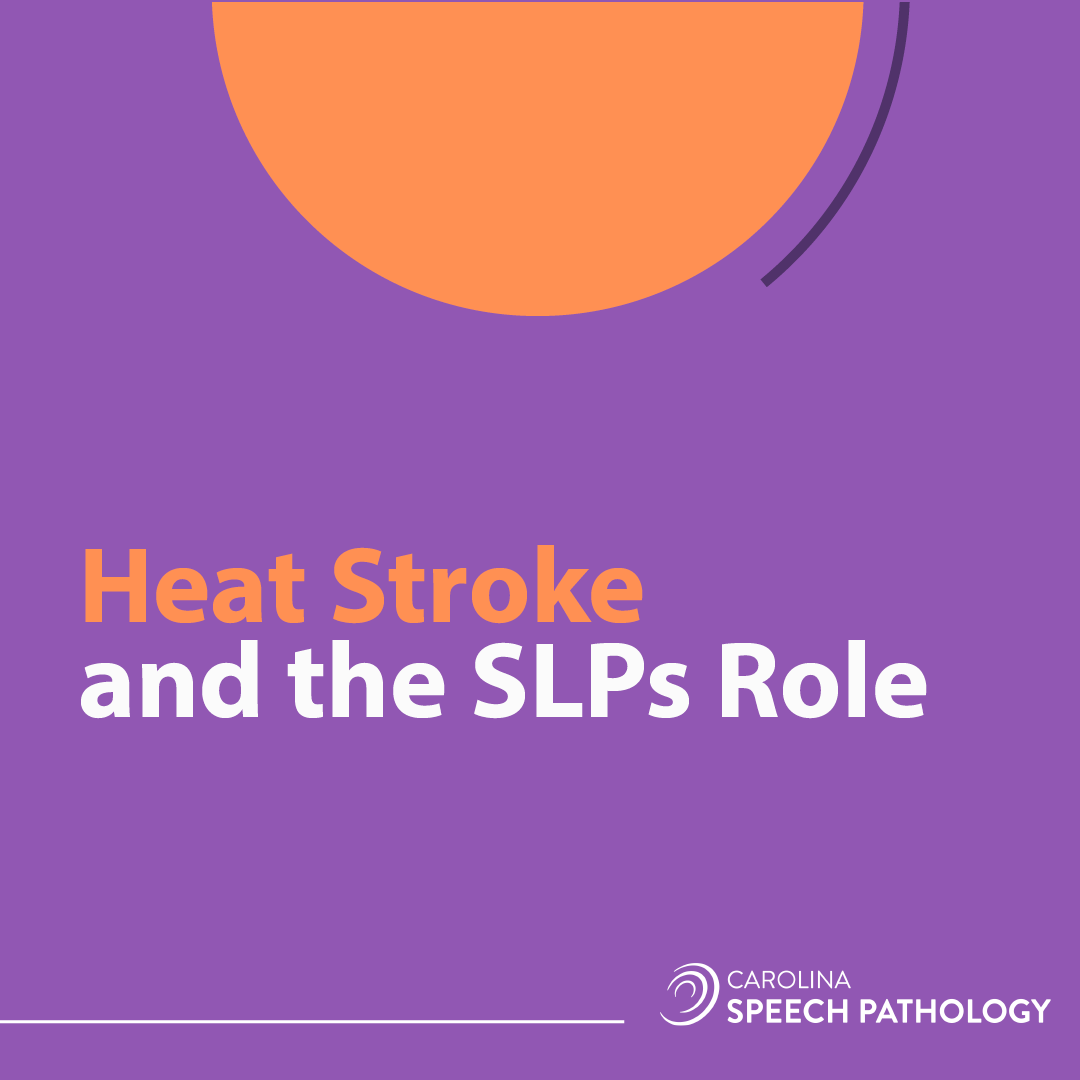It’s officially summer, and some areas within Carolina Speech Pathology’s footprint are already seeing consecutive days worth of “excessive heat warnings” on their weather apps. Extreme heat events are known to cause health hazards, such as respiratory problems, cardiovascular problems, and dehydration. According to the CDC, heat stroke is the most serious heat-related disorder. Heat stroke occurs when the body is unable to control its own temperature. As body temperature rises rapidly, the sweating mechanism fails, and the body is unable to cool down. Heat stroke can cause permanent disability and even death if not treated immediately.
Speech language pathologists may be consulted to evaluate patients following heat stroke for speech, language, cognitive, and swallowing disorders. This is due to the possibility of neurological complications following heat stroke, typically manifested as cerebellar ataxia, cognitive impairment, dysphagia, and aphasia (Kamidani et al, 2021). Although complete neurological recovery does occur in some survivors of heat stroke, deficits may persist in 20% of cases since the cerebellum is the most susceptible to thermal damage (Mehta and Jaswal, 2003), and a study conducted by Megarbane et al in 2003 showed that 50% of heat stroke survivors experienced persistent neurological deficits.
While cerebellar dysfunction is by far the predominant clinical presentation in cases of persistent neurological dysfunction, additional areas of the nervous system have been reported as impaired following heat stroke, including: cerebral cortex, brainstem, spinal cord, and the peripheral nervous system. Clinical features are usually bilateral, and recovery may be minimal or absent (Walter and Carraretto, 2016). Cerebellar atrophy was also reported 10 weeks following heat stroke events, with progressive atrophy noted during a 1 year follow up (Albukrek et al, 1997).
Speech language pathologists should be consulted to address persistent neurological deficits following heat stroke and can expect to encounter issues similar to cerebral vascular accidents: dysarthria, aphasia, cognitive deficits, and dysphagia. Residual swallowing and voice deficits as a result of invasive respiratory support, when applicable, should also be considered.
Just as with all diagnoses a speech language pathologist encounters during evaluation and treatment, using a multidisciplinary approach to better understand the extent of post-heat stroke damage on the nervous system and the prognosis for medical recovery will assist the speech language pathologist in formulating an efficacious treatment plan.
Be safe and stay cool out there!
***
Albukrek, D., Bakon, M., Moran, D. et al. Heat-stroke-induced cerebellar atrophy: clinical course, CT and MRI findings. Neuroradiology 39, 195–197 (1997). https://doi.org/10.1007/s002340050392
Kamidani, R., Okada, H., Kitagawa, Y. et al. Severe heat stroke complicated by multiple cerebral infarctions: a case report. J Med Case Reports 15, 24 (2021). https://doi.org/10.1186/s13256-020-02596-2
Mehta SR, Jaswal DS. Heat Stroke. Med J Armed Forces India. 2003 Apr;59(2):140-3. doi: 10.1016/S0377-1237(03)80062-X. Epub 2011 Jul 21. PMID: 27407489; PMCID: PMC4923787.
Walter, E.J., Carraretto, M. The neurological and cognitive consequences of hyperthermia. Crit Care 20, 199 (2016). https://doi.org/10.1186/s13054-016-1376-4

